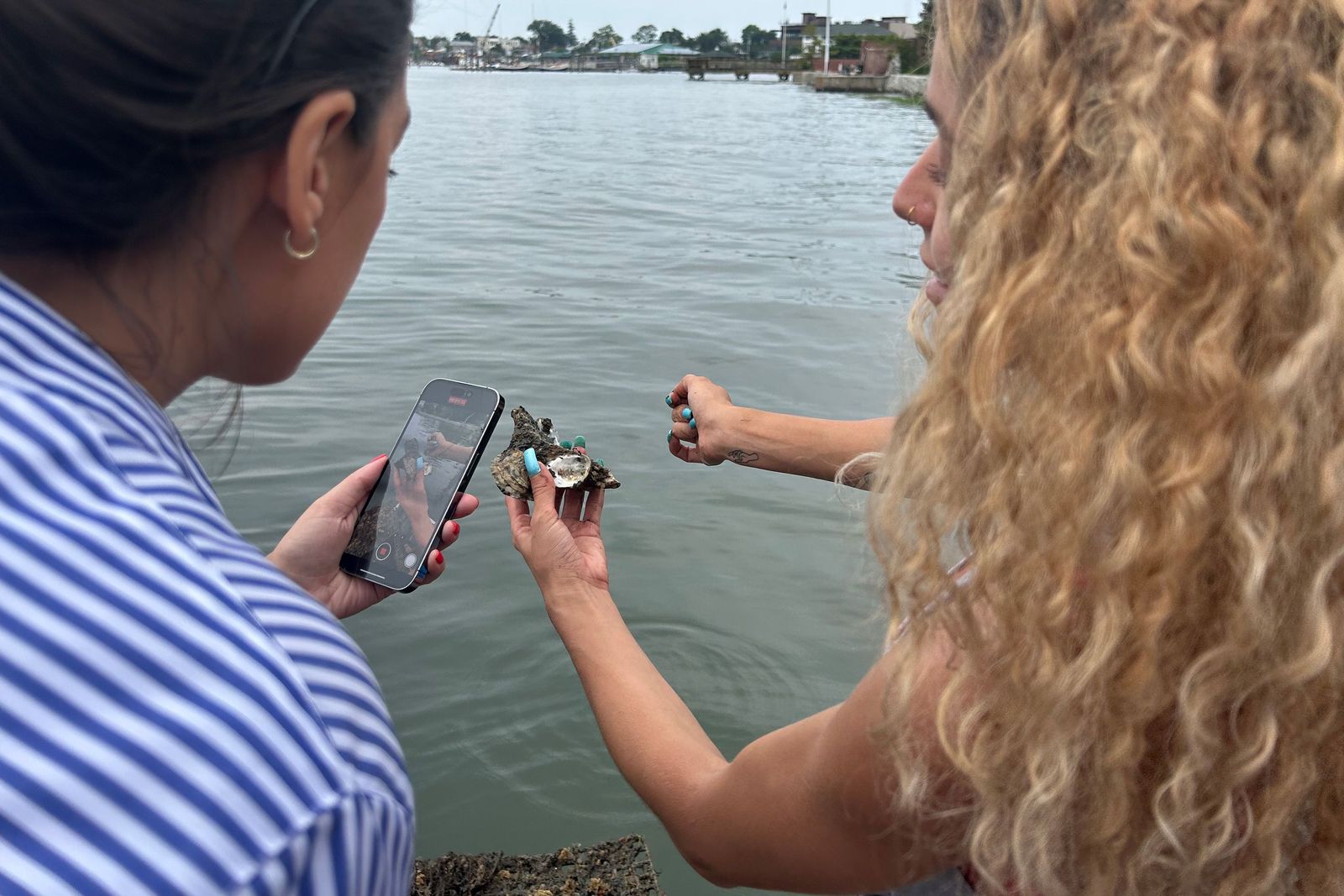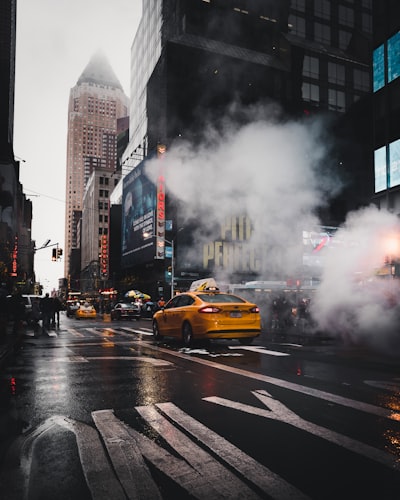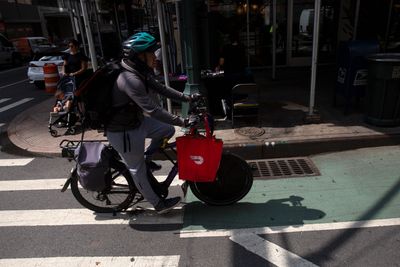Mollusks have started returning to where they were first cultivated, and locals are trying to accelerate that with artificial reefs using shells collected from restaurants.
Jonathan Custodio, The City
This article was originally published on Jul 22 12:36pm EDT by THE CITY

A century and a half ago, a journalist described how, “in City Island, the whole population, consisting of 400 persons, is employed in the cultivation of oysters.”
Masses of the mollusks, in both artificial and natural reefs, cleaned the waters and fed the people of New York City, with Broadway’s oyster bars packed day and night so that “man seems born to consume oysters.”
That was long after the Lenape people, one of several Indigenous groups native to New York, first dined on the shellfish and used its shells to create tools.
“The credit of first truly propagating oysters from seed caught upon artificial beds or prepared receptacles belongs to the men of City Island,” naturalist Ernest Ingersoll wrote in the 19th century, adding that “any object tossed into the water in summer became covered at once with infant oysters.”
A century after that, 50 years ago, oysters had almost vanished from City Island and the rest of the Long Island Sound.
Industrial pollution, dredging, overharvesting and a sewer overflow system that spews raw sewage into the water when it rains combined to shrink the population of edible oysters.
Now, they are making a comeback.
“I’ve been diving in the water since the early 70s,” said 66-year-old Mike Carew, who’s lived on City Island his entire life and owned Captain Mike’s Diving Services since the late 80s. “The oxygen levels in the water were lower than they are today.”
But only in the last seven years, Carew said, has he seen natural oyster beds in the water. Now he wants to help speed their revival through the nonprofit City Island Oyster Reef (CIOR), a mostly volunteer group.
The Base
Earlier this month, Carew and others in CIOR took Rep. Alexandria Ocasio-Cortez (D-Queens and The Bronx) on a boat tour of potential reef sites in City Island Harbor.
Carew oversees dive surveys to observe marine life and evaluate potential sites for oyster reefs, and also organizes
/cdn.vox-cdn.com/uploads/chorus_asset/file/24803252/IMG_4124.jpg)
Mark Carew (r) talks with Alexandria Ocasio-Cortez | Jonathan Custodio/THE CITY
an annual Orchard Beach cleanup. Volunteer divers remove ecologically harmful materials like plastic and Styrofoam from the water and try to clear invasive species from sites where they hope to begin new oyster reefs.
“It just really helps,” he said. “Over the years, some oyster beds started to come back.”
That, he hopes, will eventually bring in bigger fish, like winter flounder.
“The oysters are the substrate of all the marine life. It’s the base,” Carew said. “It attracts the grass shrimp and the little crabs and, you know, just everything gets bigger.”
The first step, he said, is re-establishing artificial oyster reefs in the place where those were first used. The group is planning to ask for city and state permission to start two reefs off of City Island, along with one at Ambrosini Field behind Public School 175.
/cdn.vox-cdn.com/uploads/chorus_asset/file/24801238/071223_aoc_oysters_4.jpg)
A potential reef site in front of Pilot Cove Mano | Jonathan Custodio/THE CITY
“We support an oyster reef at Ambrosini Field and are working with this group on an agreement to formalize their education and environmental efforts on parkland in City Island,” Gregg McQueen, spokesperson for the Parks Department, told THE CITY in a written statement.
Spat Catchers and Snail Drillers
For the next generation of oysters to flourish in the waters by City Island, they need empty shells in which to grow.
Baby oysters, known as larvae, must quickly find a surface to attach to — like another oyster shell — or they won’t survive. Once they’ve found a new home, they stay for life and are now known as “spat.”
That’s where spat catchers — cement cubes filled with oyster shells that students at PS 175 helped build — come into play in an evolution of seeding tactics used by City Islanders in the 19th century.
Relying on poles and chains, CIOR volunteers have hung spat catchers at several City Island locations in an effort to draw larvae into shells.
/cdn.vox-cdn.com/uploads/chorus_asset/file/24801243/071223_aoc_oysters_5.jpg)
A spat catcher | Jonathan Custodio/THE CITY
Before being used to attract spat, the shells must sit in the Pelham Bay Landfill for a year, so that they can be cleared of bacteria and pathogens. That ensures oysters that restaurants source from all around the world don’t introduce new diseases into the water here. Between May and October of last year, the group dumped an estimated 24,000 pounds of oyster shells in the landfill, according to Placchi.
The group also looks for oyster drills, the parasitic snails that, after people, are the shellfish’s top predator.
“It literally looks like a drill,” Placchi said. “Even though they’re tiny, they’re terrible.”
“They stick onto the oyster shell rich in calcium carbonate, which attracts the baby spat,” explained Placchi, before releasing an acid onto the shell, boring a small hole through it, and then secreting another enzyme before the drill “literally digests the oyster within its shell.”
An oyster drill can feed on its prey in seven to 14 hours before moving on to the next target, she added.
When they successfully avoid predators, oysters can live up to 30 years.
Slimy but Cool
While guiding Ocasio-Cortez around City Island on the boat, CIOR board members Barbara Zahm and Sally Connolly pointed out three areas where artificial reefs could be built, including long-neglected wetlands behind P.S. 75 and Ambrosini Park.
/cdn.vox-cdn.com/uploads/chorus_asset/file/24797622/071223_aoc_oysters_1.jpg)
Alexandria Ocasio-Cortez speaks with City Island Oyster Reef board member Maria Caruso | Jonathan Custodio/THE CITY
Carew recalled how he’d started “finding more and more beds in recent years.
All around I was getting scattered [oysters], maybe five, 10, 15 in an area,” he said. “And then I started finding beds.”
As the boat ride neared its end, CIOR educational and community outreach coordinator Luna Placchi, 25, glided down a ramp so the passengers could climb onto a wooden dock.
There, Placchi, who teaches students on City Island and in other parts of The Bronx about oysters’ super filtration powers, pulled the first oyster cage out of the water and took out a shellfish to show the congresswoman.
/cdn.vox-cdn.com/uploads/chorus_asset/file/24797626/071223_aoc_oysters_2.jpg)
Placchi pulls an oyster cage out of the water | Jonathan Custodio/THE CITY
“This is only three weeks old. When we got them, they were very tiny,” Placchi said.
“Look at that!” Ocasio-Cortez exclaimed as Placchi opened a cage full of young oysters.
“This is an old shell that someone ate at the restaurant,” said Placchi, ticking off local eateries that offer up their shells including Sea Shore, Seafood City, Sammy’s Fish Box, Sammy’s Shrimp Box, Johnny’s Reef and Tony’s Pier.
“They gave it to us and it became a home for roughly 20 new baby oysters,” Placchi continued, adding that not all of the oysters will survive “because they start competing for space as they grow.”
“Once we start our projects with our pilot reef, we’re gonna kind of stack them like Legos and they grow upwards,” she said, noting how oyster reef positioning is very important for getting them to clean the water by consuming its toxins. “We don’t want them going too deep in the mud because then they can’t filter.”
Placchi walked a few steps up the dock and tugged on a rope to pull a second cage out of the water. It included tunicates, algae, sea moss, arthropods, sponges, sea squirts and a spider crab. The day before, she said, there had been a blackfish inside and an American eel latched onto the oyster cage.
Placchi handed Ocasio-Cortez an oyster, and the Congressmember said that, as best she remembered, it was her first time touching a live one.
“It was a little slimy but it was cool,” Ocasio-Cortez said, adding that she would try to “line all those pieces up” to help CIOR secure approval to help people shape a living shoreline with reefs off of City Island and Orchard Beach.
THE CITY is an independent, nonprofit news outlet dedicated to hard-hitting reporting that serves the people of New York.





